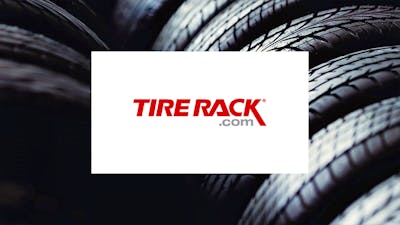Best Tires for the Lexus RX350 in 2024
Tires for a luxury crossover like the Lexus RX350 can have wildly different purposes depending on the way you drive. If you’re heading up to a cabin in the woods with muddy dirt roads between you and your destination, you’re going to want a tire with more all-terrain bite.
Get the Best Deals on Tires
If you’re driving an RX350 F Sport, you’ve got a lot more performance potential to consider. Also how much winter weather you are likely to face is a concern as well. Whatever your needs may be, we’ve got a tire option here that’s going to fit within your budget.
Have an older Lexus RX350? See tire sizes for previous years.
Best 18” Tires for the Lexus RX350:
- Laufenn S Fit A/S - Best budget tire
- Continental CrossContact or LX Sport - Best mid-priced tire
- Michelin Latitude Tour HP - Best superior tire
Best 20” Tires for the Lexus RX350:
- Laufenn S Fit A/S - Best budget tire
- Cooper Discoverer Enduramax - Best mid-priced tire
- Goodyear Assurance WeatherReady - Best superior tire
Shop Tires Online and Save
Online tire prices are usually less than in store

Original Equipment Lexus RX350 Tires
What tires are on my Lexus RX350? The current generation RX350 is sold in multiple trims with two tire sizes:
- The 18-inch wheels come with 235/65R18 tires. The OEM tire for this size wheel is either a Bridgestone Ecopia H/L 422 Plus or a Michelin Premier LTX.
- The 20-inch wheels come with 235/55R20 tires. The OEM tire for this size wheel is either a Bridgestone Ecopia H/L 422 Plus or a Michelin Premier LTX.
Replacement Tire Brands for Lexus RX350
We’ve recommended three replacement tires in both 18-, and 20-inch sizes, in budget, moderately priced and cost-no-object varieties. Whether you have plenty of cash to spend or are watching every penny, don’t worry, we’ve got you covered. All these tires have ratings of four-stars or higher based on consumer surveys:
18-inch Tires for Lexus RX350
- Budget: Laufenn S Fit A/S - Your bargain choice at $114, these all-season tires are designed for long wear with a comfortable ride.
- Good wet performance
- Good treadwear performance
- Only fair winter/snow performance
- Moderately Priced: Continental CrossContact LX25 - Affordably priced at $168, these tires get excellent consumer ratings and high marks for tread life.
- Excellent treadwear performance
- Excellent wet performance
- Only fair winter/snow performance
- Cost-No-Object: Goodyear Assurance WeatherReady - This tire combines the smooth ride of an all-season tourer with a rubber compound formulated to provide excellent winter weather traction for $224.
- Comfortable ride
- Excellent winter performance
- High price
20-inch Tires for Lexus RX350
- Budget: Kumho Crugen HP71 - With a price of only $149, this is a great option for those on a budget. This all-season tire maintains traction in light snow and has a smooth quiet ride.
- Comfortable ride
- Excellent treadwear performance
- Only recommended for light snow
- Moderately Priced: Continental CrossContact LX25 - Priced at $186, this all-season grand touring tire gets high marks for performance in wet and dry conditions as well as treadwear.
- Excellent treadwear performance
- Excellent wet performance
- Only fair winter/snow performance
- Cost-No-Object: Goodyear Assurance WeatherReady - This tire provides the smooth ride of an all-season grand touring tire with a rubber formulated to provide excellent winter weather traction for $239.
- Comfortable ride
- Excellent winter performance
- High price
When Should You Replace Tires?
There are two regular milestones that will suggest that it’s time to replace the tires, not only on your Lexus RX350, but any vehicle in your driveway: Time and mileage.
Considering most drivers cover between 12,000 and 15,000 miles per year, most RX350 owners will pass the miles their original equipment tires were intended to cover well before they’ll go past the tire’s usable age.
The life of your tire can be somewhat predicted by its UTQG (Uniform Tire Quality Grade) rating. Tire manufacturers apply their own grades to tires for treadwear, traction and temperature. When you’re researching tires online, a UTQG will come up next to the tire name in three digits and a number (ex. 500 A A).
You can glean a bit of info from the tires by reading this rating:
- 500 - The durability rating of a tire, compared to a control tire with a treadlife of 100. To obtain a grade, tires run on a 640 kilometer course for 11,520 km. Every 1,280 km, the tread depth is measured, to provide a projected tread life. The higher the number, the longer the predicted treadlife.
- A - This is the Traction rating of a tire, which indicates how well a tire stops in wet conditions. The highest letter grade is AA, followed by A, B and C.
- A - The second letter in the UTQG is the Temperature rating, which indicates how well a tire holds up to extreme heat. A is the highest, followed by B and C.
Original equipment Bridgestone Ecopia H/L 422 Plus tires on the RX350 earn a 600 AA UTQG rating. Unless they are damaged, these tires could last up to 60,000 miles before you need to replace them.
The other consideration is time. Each tire has a raised date code on the sidewall. The number begins with the letters “DOT” followed by 12 digits in three four-digit groups. The date code is the third group of four digits. To decipher the date of your tires, the first two digits represent the WEEK the tire was produced, and the second two digits represent the YEAR.
For example, if your tire’s date code is 3217, that indicates the tire was manufactured in the 37th week of 2017, or sometime between September 11 and 17th that year.
Once tires go beyond five years old, it’s time to consider replacing them. Tires are made up not just of rubber and steel or Kevlar belts, but chemicals that help the tires resist UV rays, temperature changes and a lot of other environmental hazards. Those chemicals start to break down after five years or so, and the tires aren’t doing the job that they need to do. At that point, it doesn’t matter how good they look. It’s time for replacements.
Why Not Replace with Original Equipment Tires?
There’s nothing wrong with putting on the same tires that were on your car when it came from the factory. Although they’re perfectly fine, you may be able to find a tire that’s better suited to your specific needs.
You only need to purchase ONE set of tires for your car every four years or so, depending on how much you drive. When an auto manufacturer purchases tires, they buy them by the hundreds of thousands. For the manufacturer, the decision to choose a supplier one brand or another comes down to a price point.
For you, your consideration may be completely different. If you could get a tire that stopped 20 feet shorter for an additional $10 per tire over the original equipment, you’d probably do it. Similarly, if there was a tire that made less road noise for a minimal investment over stock, you’d probably decide on the slightly more expensive tire (that is, unless you’re trying to drown out the conversation of your back-seat-driving spouse.)
Changing Lexus RX350 Tire Sizes
Depending on the year and model, you may be shopping tires to fit anything between 17-inch for older models to 20-inch wheels with various widths and sidewall sizes along the way. It is possible to change the wheel and tire sizes, but a general rule of thumb is to keep the total diameter of the wheel and tire the same. So, that means that downsizing an 18-inch wheel to a 17-inch wheel would include a proportionate upsizing of the tire sidewall to compensate.
Increasing or decreasing your overall diameter results in your speedometer reading slower or faster than it would with the original size. And that reading is proportional. A change in size from a 28-inch diameter to a 31-inch diameter might show 5mph off at 30mph, and 10mph off at 70.
Downsizing wheels has its advantages. Benefits include:
- Better ride quality – More rubber means more cushion for poor road conditions.
- Cost reduction – Big tires are expensive, so moving to a smaller wheel size will mean less costly tire purchases.
- Seasonal changes – Winter and snow tires are available for a larger selection of smaller wheel sizes and the narrower footprint will provide better traction.
- Off-road – Many people choose to downsize wheels for off-road use to increase the vehicle’s shock absorption capabilities and bump traction on loose surfaces.
On the other side of the coin, going up in wheel size has its benefits:
- Better handling – Slimmer profile tires makes for less rubber to move around.
- Better looks – This one’s subjective, but many people feel that larger wheels look better than smaller wheels with more rubber.
- Better braking – Larger, wider wheels provide a bigger patch of rubber on the ground to slow the vehicle, reducing braking distance.
How to Read Tire Sizes
When reading tire sizes, it’s important to understand what the numbers mean. The Lexus RX350’s 18-inch wheels come with 235/65R18 106V all-season tires:
- 235 - indicates the width of the tire from one sidewall to the other in millimeters. This tire is 235 millimeters wide.
- 65 - indicates the aspect ratio, or sidewall height, as a percentage of the tire’s width. In this case, it’s 65 percent or of the tire’s width.
- R - means radial tires. Radials are the most common type of automotive tire and have fabric woven in at various angles with tread that is strengthened with additional layers of rubber.
- 18 - indicates the wheel diameter.
- 106 - is the tire’s load rating.
- V is the tire’s speed rating. H-rated tires have a maximum top speed of 149 mph.
You may have noticed that the Lexus RX350’s two tire sizes have different diameters and different aspect ratios. Generally, automakers choose tires that have the same outer diameter. This allows them to have only one speedometer setting.
Now that you know what comes on a new RX350 and how to read the size numbers, let’s look at the different types of tires available to you. Depending on the type of driving you’re doing, where you live, and the weather, you have a variety of choices for tire types:
- Touring and All-season tires - provide a smooth ride, good wet and dry traction, decent winter traction, and longer tread life. These tires are acceptable for winter use but can’t be expected to provide the traction and stopping power that a dedicated winter tire can
- Performance tires - are focused on providing confident handling, better wet and dry traction, and a sporty feel. Their higher grip and speed ratings come with a tradeoff of shortened tread life and reduced ride quality.
- All-terrain tires - are built to maximize off-road traction and provide good durability overall. Their construction means more noise and less comfort on the road, but winter traction and tread wear is acceptable
- Winter and snow tires - are made with special rubber compounds that maintain grip and pliability when temperatures drop. They are also built with special tread patterns to maximize the vehicle’s ability to start and stop on very slippery roads.
Car Talk Community's Favorite Tires
Car Talk's very active online Community has many interesting and thoughtful perspectives on the best tire brands in the industry, based on real life user experience and knowledge.
Read more on the Best Tires in the industry according to the Car Talk Community here.
Tire Sizes By Year
| Year | Trim | Size |
|---|
Shop Tires Online and Save
Online tire prices are usually less than in store

Lexus RX350 Tire FAQ
- What’s the best tire for the Lexus RX350
The Continental CrossContact LX Sport split the difference between price and performance, and achieves high marks in consumer satisfaction.
- What tires came on the Lexus RX350 originally?
Depending on trim level, your RX350 could’ve been running Michelin Premier LTX or Bridgestone Ecopia HL 422 Plus tires, in either 18- or 20-inch sizes.
- What is the best Lexus RX350 tire pressure?
Check inside your driver’s side door for a white and yellow label that will tell you the exact tire pressure recommendations for your RX350 model. That tire pressure can also change depending on the load of passengers you’re carrying, as well as the cargo load.
Note that the pressure on the tire itself is never the correct setting, but rather a maximum.
- How often should I rotate my RX350’s tires?
Rotating tires is more about the tire than it is about the car. A typical rotation interval is somewhere between 5,000 and 7,000 miles, though specific cars and tires may change those numbers a bit. If your RX350 is all-wheel drive, then the front tires will likely wear first making it important to rotate regularly.
- What is the best RX350 tire change kit?
Your SLexus RX350 should have come equipped with a compact spare tire and changing tools. In this case, you already have everything you need to physically change the tire, but you may want to carry an extra roadside emergency kit with an upgraded lug wrench, jumper cables, and emergency markers just in case.













